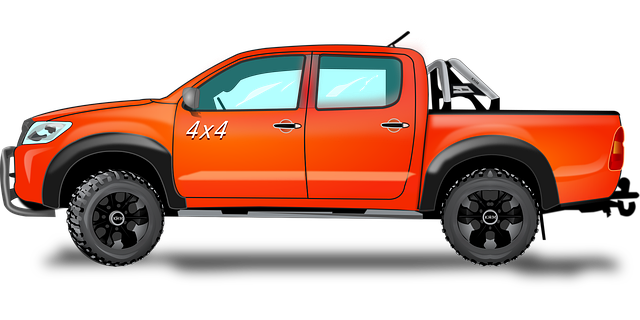ABS sensors are essential components at Brownsville-overland 4×4-shops, enhancing vehicle safety by monitoring wheel speed and slip during braking. They detect lockup or skidding and correct issues to improve control on diverse landscapes, making them a game-changer in the automotive industry. These sensors work with master cylinders and calipers to prevent wheel locking, maintain steering control, and ensure maximum brake contact for effective deceleration. Regular checks are crucial for optimal performance in demanding off-road conditions.
ABS sensors are vital components in modern braking systems, ensuring enhanced safety and efficiency on the road. This article explores their role in Brownsville-overland 4x4s, delving into their types, installation, maintenance, and the dramatic improvement they bring to off-road driving. Understanding ABS sensors is crucial for any owner of a 4×4 seeking optimal performance and control in various terrain. Learn how these sensors contribute to a safer, more enjoyable driving experience, especially when tackling challenging off-road trails.
- Understanding ABS Sensors: The Backbone of Modern Braking Systems
- – Definition and purpose of ABS sensors
- – How they work in conjunction with other components to enhance braking efficiency and safety
- ABS Sensors in Brownsville-overland 4×4-shop: A Special Focus
Understanding ABS Sensors: The Backbone of Modern Braking Systems

ABS sensors are an indispensable component in modern braking systems. These sensors play a pivotal role in enhancing vehicle safety by providing real-time data on wheel speed and slip conditions during braking. At a Brownsville-overland 4×4-shop, for instance, ABS sensors are meticulously integrated to ensure optimal performance under various driving conditions, especially in challenging off-road scenarios often encountered by 4×4 enthusiasts.
Understanding how ABS sensors work is crucial for anyone looking to optimize their vehicle’s braking capabilities. The sensors continuously monitor each wheel’s speed relative to the others and the overall vehicle speed. This information enables the ABS system to quickly detect and correct wheel lockup or skidding, ensuring better control and reducing the risk of accidents. By revolutionizing braking technology, ABS sensors have become a game-changer in the automotive industry, fostering safety and confidence for drivers across diverse landscapes.
– Definition and purpose of ABS sensors

ABS sensors, short for Anti-lock Braking System sensors, are critical components in modern vehicles, especially those designed for off-road adventures like the Brownsville-overland 4×4-shop. These sensors play a vital role in enhancing safety and controlling wheel lock during emergency braking situations. By continuously monitoring wheel speed, ABS sensors detect and prevent individual wheels from locking up, ensuring maximum traction and driver control on diverse terrains. For 4×4 enthusiasts exploring challenging landscapes, reliable ABS sensors are essential for navigating through mud, snow, or unpaved roads with confidence and precision.
– How they work in conjunction with other components to enhance braking efficiency and safety

ABS sensors work hand-in-hand with other components in a vehicle’s braking system to significantly enhance efficiency and safety, especially in challenging conditions like those encountered at a Brownsville-overland 4×4-shop. When a driver applies brakes, these sensors detect wheel speed changes that indicate potential locking or skidding, sending signals to the Anti-lock Braking System (ABS) module. This module then modifies brake pressure individually for each wheel, preventing locking and maintaining steering control during hard braking maneuvers.
This real-time adjustment ensures maximum contact between brakes and rotors, allowing for more effective deceleration. By working in synergy with other components like master cylinders, calipers, and pads, ABS sensors contribute to improved overall braking performance. This is particularly crucial for 4×4 vehicles navigating rough terrain or handling sudden obstacles, where precise control and stability are paramount, making the Brownsville-overland 4×4-shop a prime location to understand and appreciate their functionality.
ABS Sensors in Brownsville-overland 4×4-shop: A Special Focus

ABS sensors play a pivotal role in the functionality of a Brownsville-overland 4×4-shop’s advanced braking systems. These sensors are strategically placed near each wheel to monitor and transmit vital data about vehicle speed, wheel rotation, and vehicle dynamics to the Anti-lock Braking System (ABS) module. This real-time information enables the ABS to make precise adjustments, preventing wheels from locking up during hard braking maneuvers, thereby enhancing control and safety in challenging terrain often encountered in 4×4 vehicles.
When it comes to maintaining and servicing these sensors in a Brownsville-overland 4×4-shop, specialized tools and expertise are essential. Technicians must be adept at diagnosing sensor failures, cleaning and replacing components as needed, and ensuring proper calibration for optimal performance. Regular ABS sensor checks are crucial for maintaining the overall integrity of the braking system, especially in demanding off-road conditions where sudden changes in terrain can exert significant stress on these critical components.
ABS sensors play a pivotal role in modern braking systems, ensuring enhanced efficiency and safety, especially in challenging conditions like those encountered at a Brownsville-overland 4×4-shop. By continuously monitoring wheel speed, these sensors enable the ABS system to quickly detect and correct lockup, preventing skids and improving control. This technology is crucial for off-road adventures, where terrain variations demand precise braking performance. Understanding and maintaining ABS sensors can significantly contribute to a safer and more enjoyable driving experience in any environment.



